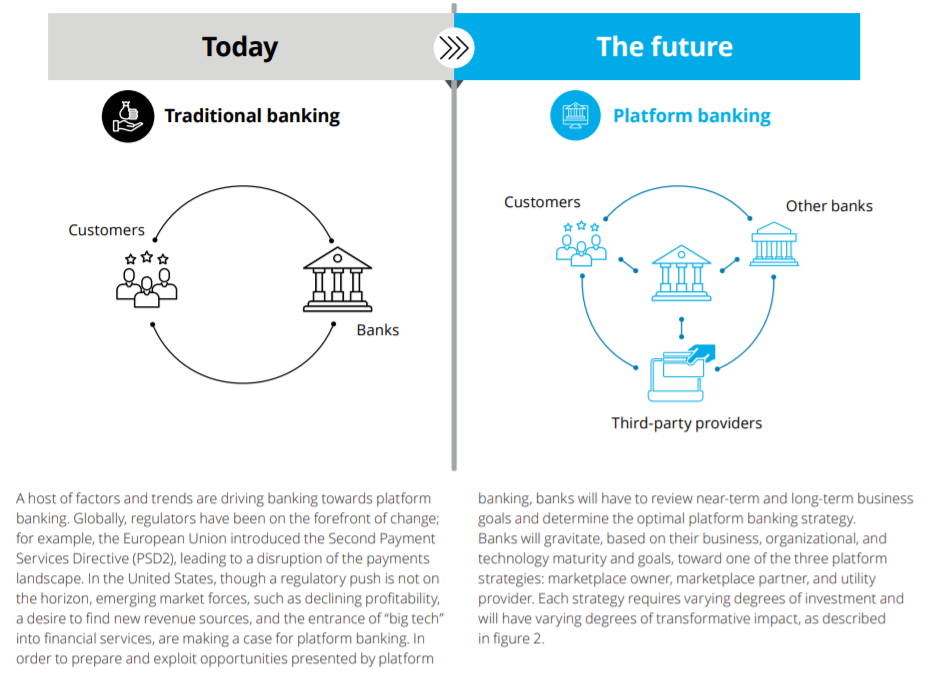
For most banks, successful adoption of platform banking standards will require substantial reengineering of current core banking application and infrastructure. Microservices-based architecture is a critical enabler that allows efficient and accelerated integration with third parties, which can become the chief competitive differentiator in the platform banking ecosystem.
Banks often have a mix of trusted old systems handling essential tasks, and new technologies to support modern demands such as mobile banking. The traditional banking sector often runs a batch-like approach to data, processing vast amounts of data at certain times, like the end of the day. Microservices are an event-based architecture, responding to events, often thousands of times per second. This change, in particular, can result in a more responsive business but needs a degree of trust and responsiveness to accommodate it. With Modular bank, we have carefully followed microservices design principles. A microservice architecture is now recognized by many industries (traditional and emerging alike) as advantageous to their technology teams.
Microservices4
Can banks be built on microservices?
Opening banking through architecture re-engineering: A microservices-based roadmap